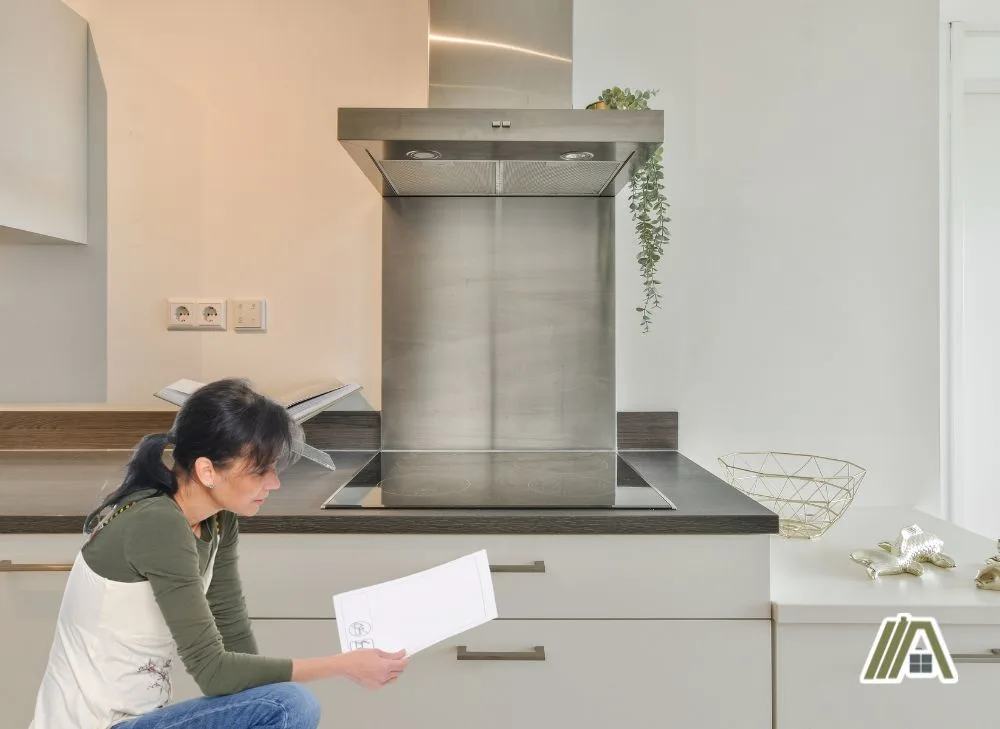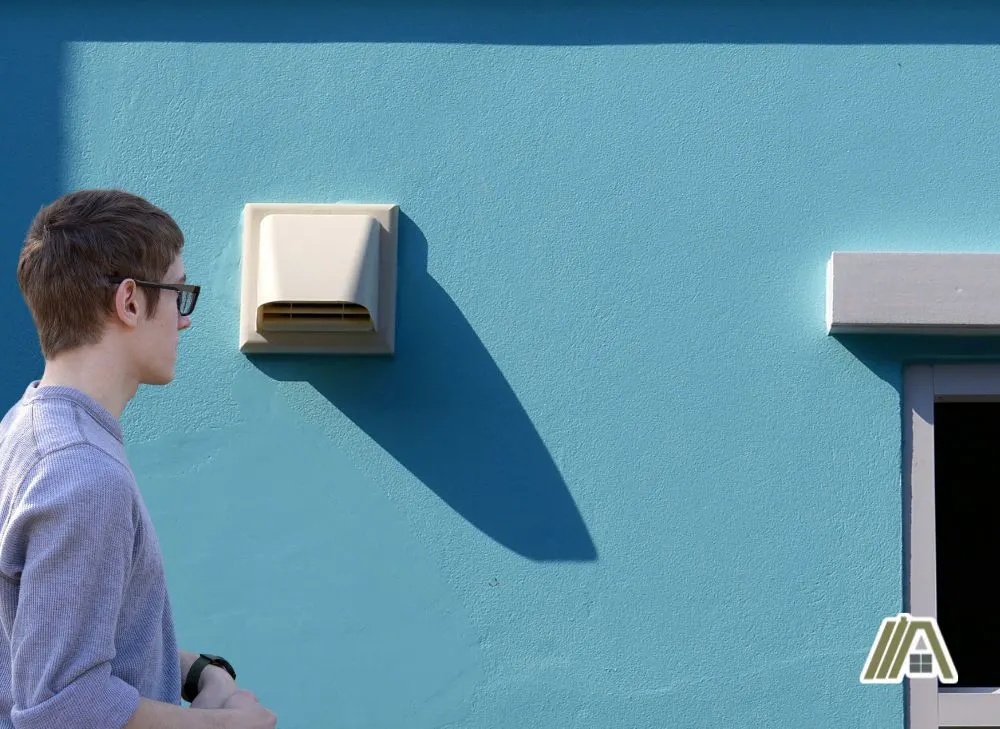Try asking someone on the street, “how do I know if my range hood is ducted or not?” and you will likely receive some strange looks. I, on the other hand, know why you are asking and why the answer is not necessarily straightforward.
Ducted and ductless range hoods are designed to look similar, and without purchasing and installing the hood yourself, it can be challenging to establish which one you have. Particularly with all the finishes that can be added on with or without a functional purpose.

Chimneys are an ambiguous indication if a range hood is ducted or not. The user manual or online information is a good way to establish if it’s ducted or ductless. It is possible to check inside the hood for a duct and to test exhaust vents around the house to see if one is linked to the range hood.
Chimney or Lack of Chimney Not a Good Indicator
You would think that a chimney means your hood is ducted, but this can be a misleading diagnostic because people can install a chimney for aesthetic purposes.
It could also just be an old chimney that the new range hood isn’t using. It wouldn’t be the first house where the reno retained the chimney because it was old and interesting.
Comparatively, a lack of chimney doesn’t necessarily equate to a ductless range hood. There is a snag when you consider that ducted range hoods can be vented straight through a wall.
Check Your User Manual
If you want to know whether you have a ducted or ductless range hood, one of the best ways to check is by looking at the appliance’s user manual. This booklet contains information on the model, installation, usage, and safety practices and features.
Some range hood models might have “ducted” or “ductless” included in the product name, but not always. The information for ducting will likely be found in a section near the front of the manual.

Hauslane manuals, as with the UC-PS18, have the ducting information on the “Preparation” page, mentioning that the model requires ducting.
This can also be a section referring to “Pre-installation”, like with the Cosmo C0S-QS90, or “Prepare installation”. You need to look for the heading talking about ducting planning or ducting requirements.
You can also look in the installation section itself.
Look It up Online
You can always look up the necessary information online if you don’t have the original user manual.
There will be a label containing the model number and specs attached to the unit itself, although where it is can differ. The most likely locations are on the canopy (check all sides) or behind the filters.
If you are struggling to locate it, search the brand and where to find the model number on it.
Once you know which range hood you have, you can search the product. Manufacturers and sellers can include the duct type in the information section for the product on their website (like they do with this ProLine hood).
Alternatively, you have the opportunity to access the user manual (or at least a spec sheet) for the appliance online. Many brands, like Hauslane, have a PDF of the manual available on their website.
If all else fails, you can contact the manufacturer’s customer line with the model number and ask outright.
Open the Hood and Check for a Duct
The range hood grille or filter part of the range hood should be removable so that you can degrease and clean it.
Some range hoods have handles on baffle filters that you can use to lift the part into the hood to dislodge it. Otherwise, you will need to use your hands to lift the part carefully.
Then you can slide the filter backward; be careful not to injure yourself or damage the appliance. From there, you can tilt the filter’s front edge down and lift it out the hood.
You might also need to pull down on the center filter and then slide it out of the range hood. You just need to figure out which method works best for your range hood.
Once you have removed these parts from your range hood, you can grab your torch. Now, look and see if you can find a duct disappearing up into the ceiling (through the hood’s chimney) or through the wall.
If you find one, your range hood is ducted. If you don’t it’s ductless.
Find Terminal Vents
If you have a ducted range hood, then it will have a vent leading to the outside of the house.
If your range hood is installed on an external wall, you can check this wall from the outside to find the vent. The reason you can assume the vent would be through this wall is because range hood ducting must follow the shortest route to the outdoors.

It will be a little trickier if your range hood isn’t on an external wall. You will need to play the elimination game to find the vent.
Terminal Vent Elimination
Locate all the exhaust terminal vents. These vents are equipped with backdraft dampers to prevent exhaust air from re-entering the vent.
You should check your roof, walls, and soffit (permitted through, not into). Thankfully, you can likely eliminate exhaust vents on the far side of the house since the duct is supposed to be as short as possible.
It may also help to know that the International Residential Code (IRC) Section M1504.3 requires exhaust terminals to be at least 3’ from property lines, gravity air intakes, and functional windows and doors.
Turn on your range hood and listen by each vent. The vent that is linked to the range hood should be making more noise. You should also be able to feel some airflow coming from the vent.
Another sign that the vent belongs to your range hood can be the presence of grease on and around the duct since that is what is extracted from the kitchen.
If you cannot locate a vent that seems to be connected to the range hood, you likely have a ductless unit, especially if there is another source of ventilation.
Sources
https://www.broan-nutone.com/en-us/home/customer-service/locate-model-numbers
https://www.prolinerangehoods.com/blog/how-to-remove-range-hood-filter/
https://homeguides.sfgate.com/replace-filters-range-hoods-33468.html
